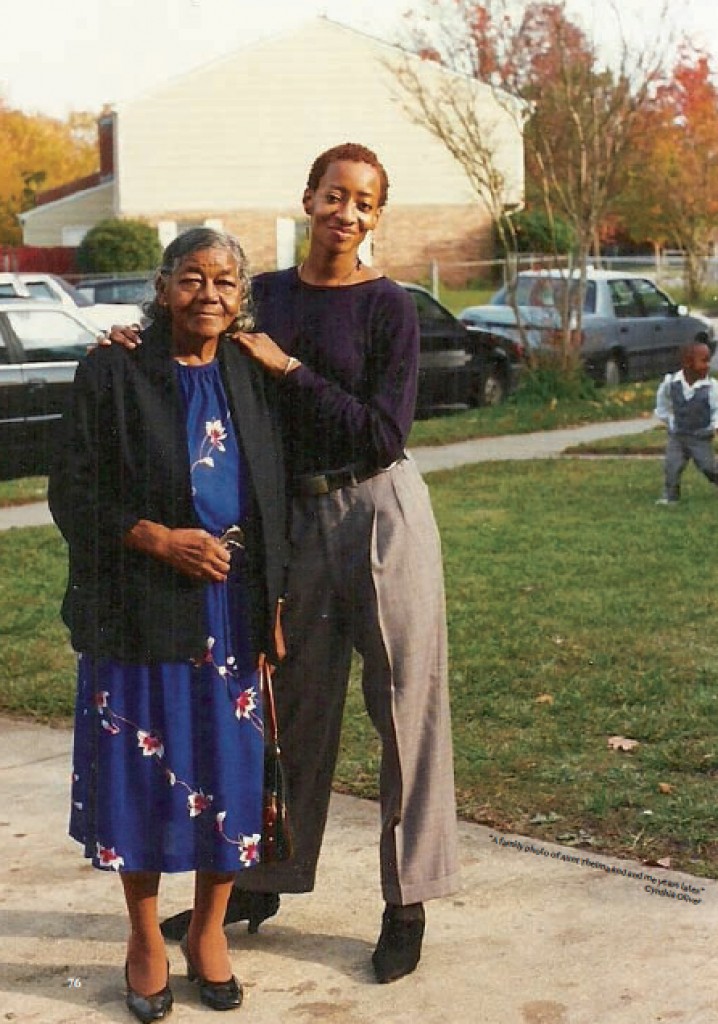Cynthia Oliver: Holy Rolling, Strength Training, Eye Attuning, Dance Making (Excerpt)
April 11, 2018
Excerpt from Holy Rolling, Strength Training, Eye Attuning, Dance Making
By Cynthia Oliver
My cousin Merle and I were titillated when our great Aunt Thelma would come to pick us up and take us to church. She was a Pentecostal “holy roller” by my maternal family’s Baptist standards. A Bible always nearby she could quote scripture at a moment’s notice and had the cure for one’s ills at the ready in the holy word. I was fascinated by her faithfulness, and in the sense of community at the parish. And more than all of that, the way the people moved when inhabited, struck, by the spirit. Built in a customary structure for small churches in the countryside of Norfolk, Virginia, the small white clapboard building had a sizeable middle isle from the entry door all the way to the altar.
Merle and I sat quietly and waited with anticipation for the fervor of the pastor to enliven the flock.
They shouted back with feeling when their leader said something they agreed with. They hymned and hawed when a lesson was learned or they were rightfully chastised. “Yaaaas Lawd,” “I hear you Lawd.” “HmmmHm,” or “Say it.” “Tell em.” The faithful were in conversation with the divine. That conversation was amplified with the body. As what seemed like hours would pass, and energy was slowly and rootedly building, one could feel the vibration in the room ramping up. And suddenly a shouting shaking, jumping, angular and swift body would be moved to first animate in the pew then swing into the isle and a way would be made for them to take over the center space. To move and receive spirit and the support of their fellow worshippers in the room. Or make their way to the altar and be blessed.
I don’t remember anything about the denouement of these services. How things settled so that folks could calmly walk out, get in their cars and drive home, I don’t know.
Aunt Thelma’s practice took on a whole new meaning and I believe she knew faith and practice and gained wells of strength to go on as a black woman in the south on these days. Her public composure was thrown in sharp relief by that sanctity. In that small weekly gathering, she and fellow worshipers used the sudden surprising bursts of movement, that space of utterance, to garner what they needed to go back to the world where being on their knees was what they did in white folks houses with a mop or rag in their hands. Jumping, shouting—in every sense of the word, and sanctifying was what they did as free agents, celebrating their humanity in shared space.
The movement practices of my mother’s kin spur me to ask: how might the way I decide to move be influenced by those early years? What about the movement in the intimate house of worship bolstered the confidence and sense of purpose Civil Rights, Black Power, and now Black Lives Matter activists have and continue to fight for?
Excerpt from Dancing Platform, Praying Grounds: Blackness, Churches, and Downtown Dance (Danspace Project Platform 2018) catalogue
